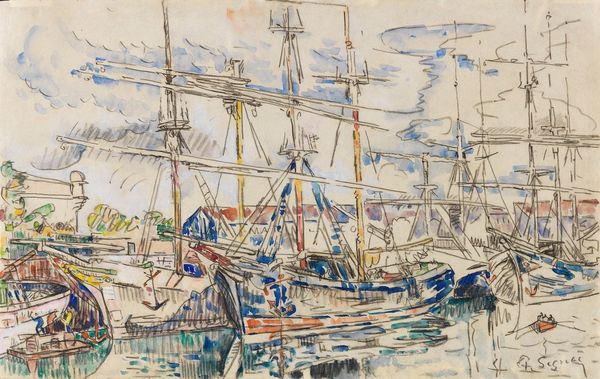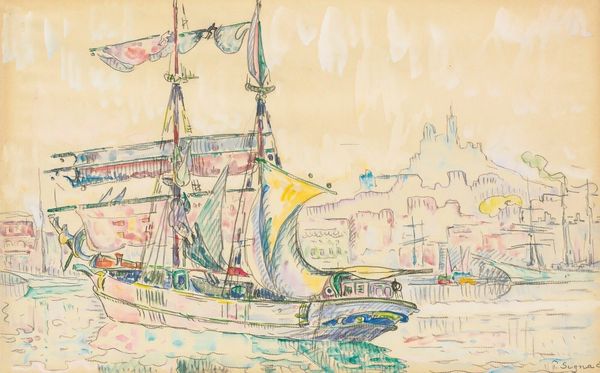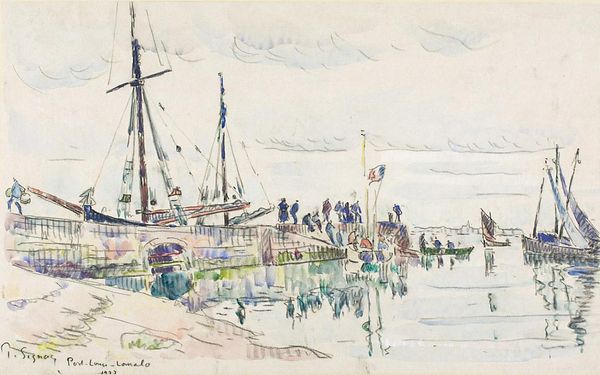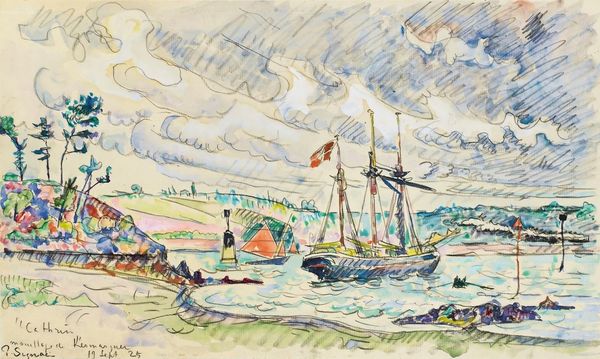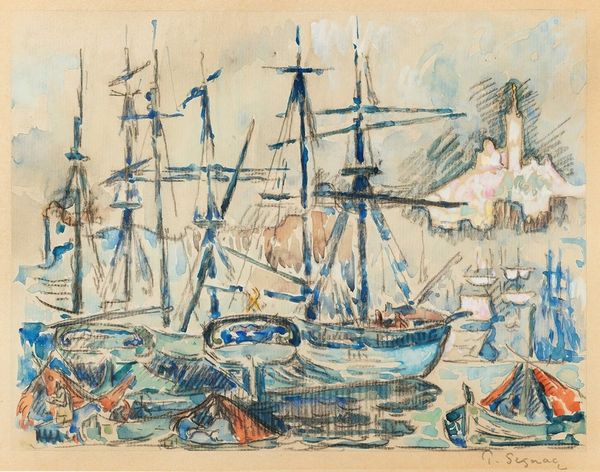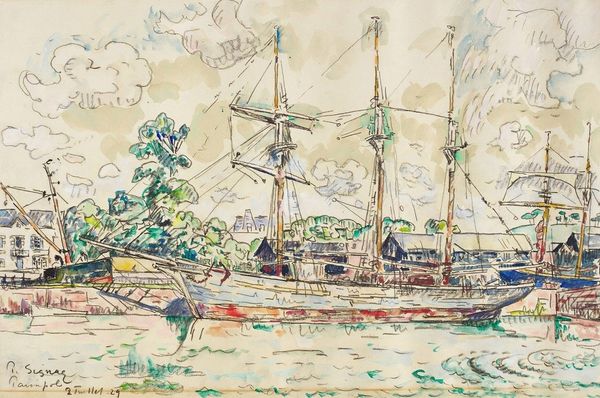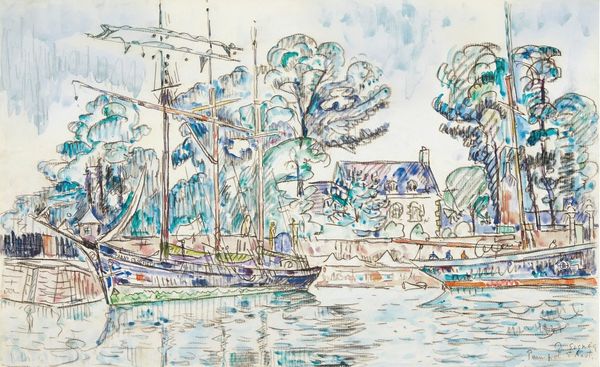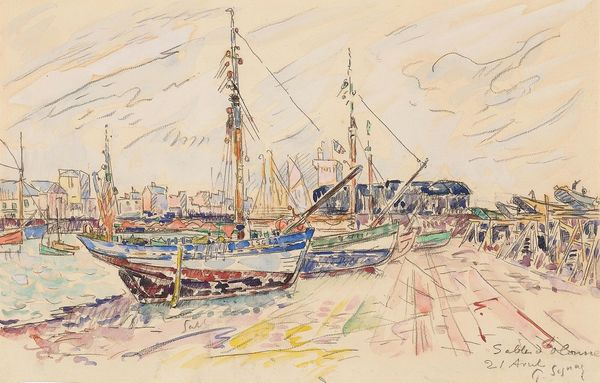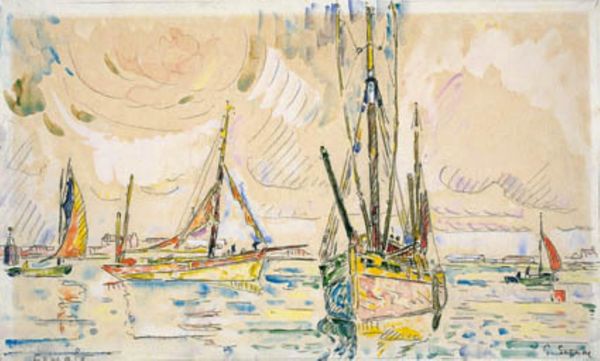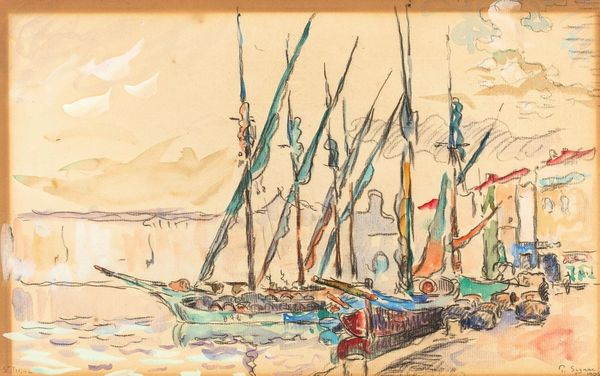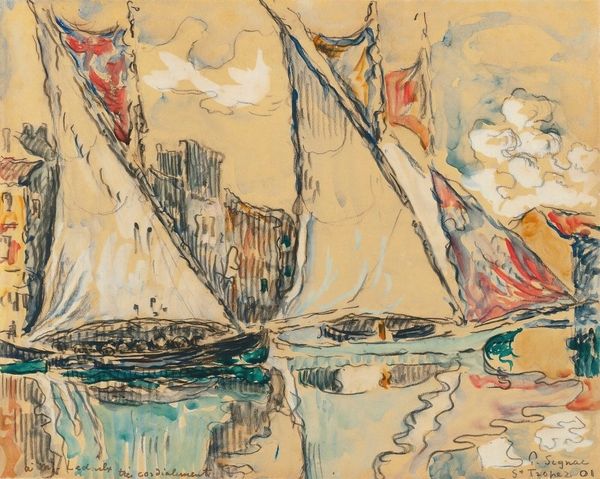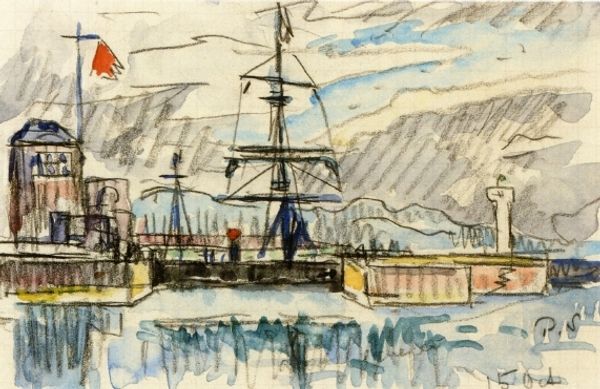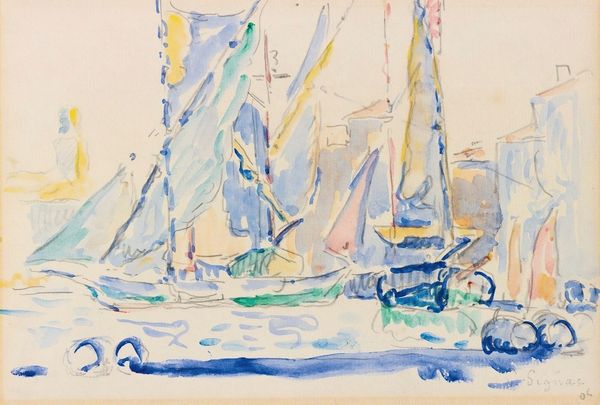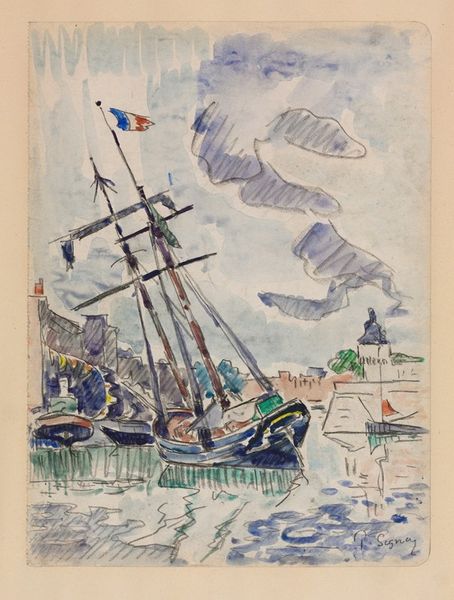
#
landscape illustration sketch
#
abstract painting
#
ink painting
#
landscape
#
handmade artwork painting
#
fluid art
#
watercolour bleed
#
watercolour illustration
#
mixed medium
#
watercolor
#
environment sketch
Copyright: Public Domain: Artvee
Editor: This is "Le port de Paimpol" by Paul Signac, created in 1924. It looks like it's made with watercolors. The overall impression is somewhat dreamlike and ethereal. What compositional elements stand out to you? Curator: Notice how Signac orchestrates the composition through a rigorous application of color and line. Observe the interplay between the vertical masts of the ships and the vertical strokes defining the sky, echoing each other and creating a sense of visual unity. The watercolor medium allows for a fluidity that softens the structural rigor. The juxtaposition of defined forms with blurred reflections intrigues—doesn’t it? Editor: Yes, the reflections in the water are almost more abstract than the buildings themselves. It's fascinating. Curator: Precisely. The architectural structures, rendered with detailed outlines, stand in contrast to the almost dissolving reflections. This pushes the surface play, highlighting the inherent flatness of the picture plane even while depicting spatial depth. Are you seeing any geometry present? Editor: I do see some subtle geometry. It almost seems that simple geometric forms underlie the construction of the port. What are your thoughts? Curator: Indeed, Signac was quite attuned to underlying geometric structures in his landscapes. Also, think about how the high vantage point impacts the overall reading. It flattens space, directing the eye towards surface relationships between colors and forms rather than a deep recession into the landscape. Editor: I hadn't considered the vantage point playing such a critical role. That makes me rethink the whole composition. Thank you. Curator: The structural elements and the visual relationship they form provide a clear entry point for an enhanced understanding of the painting and a different kind of understanding.
Comments
No comments
Be the first to comment and join the conversation on the ultimate creative platform.
